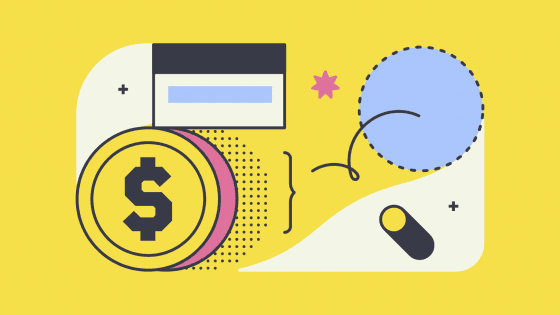There’s a strong correlation between search rankings and backlinks. If your website has few or no backlinks, search engines will deem it unworthy of first-page rankings. With that said, search engines place greater weight on the quality of a website’s backlinks rather than quantity. To reach the first page of Google’s and Bing’s search results, you should focus on building editorial backlinks. They hold greater weight over your website’s search rankings than other types of backlinks, making them an essential component of search engine optimization (SEO).
What Are Editorial Backlinks?

An editorial backlink is an organic inbound link that’s used naturally in an authority website’s content. When webmasters create content, they often link to other websites. If a webmaster wants to mention a statistic, for example, he or she may link to the website where it was originally published.
Editorial backlinks are organic inbound links such as this that webmasters of authority websites create voluntarily. Like with all organic backlinks, you can’t purchase editorial backlinks. To acquire them, you must convince other webmasters that your website’s content is worthy of a link.
Use a Trustworthy Domain

Your website’s domain can affect the number of editorial backlinks it attracts. If a webmaster doesn’t trust your website’s domain, he or she won’t link to it. What are the characteristics of a trustworthy domain exactly? They consist of a branded domain name with a common domain extension, such as .com or .net. If your website uses a keyword-based domain name or a lesser-known domain extension, webmasters may perceive it as spam, in which case your website won’t attract many editorial backlinks.
Create Evergreen Content

With its ability to stay relevant for many months if not years, evergreen content typically attracts more editorial backlinks than time-sensitive content. Webmasters of authority websites are selective regarding the websites to which they link. To provide their visitors with a positive experience, they usually only link to websites with accurate and relevant content. If your website’s content is outdated and no longer relevant, webmasters may think twice before linking to it.
Evergreen content is defined by long-term relevance, meaning it’s accurate, as well as in demand, long after being published. It doesn’t experience an extreme drop-off in views shortly after being published. As a result, high-quality evergreen content is a magnet for editorial backlinks.
Publish Studies

Including studies in your website’s content can help you attract more editorial backlinks. It’s customary for webmasters to link back to the sources from which they acquire facts or statistics. There are over 230 million pages indexed by Google, for instance, featuring the phrase “according to a study.” If you browse through some of these listings, you’ll discover that many of them include a link to the study’s source.
Ideally, you should conduct your own studies to publish on your website. If you publish an existing study, webmasters may bypass your website by linking directly to the study’s source. Of course, conducting studies is time-consuming, and in many cases, expensive. An alternative idea is to conduct a basic poll on your website where visitors select an answer from a list of available choices. You can then turn the results into a study to publish on your website.
Publish Infographics

In addition to studies, webmasters of authority websites often link to infographics. Consisting of a large image with multiple facts, figures, statistics or other types of information, they are well-received among internet users. When searching the internet for information, many users prefer to view an infographic rather than read a long body of text. Infographics are colorful, fun and filled with useful information.
Webmasters of authority of websites recognize the popularity of infographics, so they often to link to them. You can still publish other types of content, but don’t underestimate the link-attracting properties of infographics. The aesthetic way in which they convey information makes them popular among internet users. And if you lack the graphic design proficiency needed to create them, you can always outsource the job to a freelancer or agency.
Share Interviews

You can share interviews on your website to attract more editorial backlinks. When you publish an interview on your website, webmasters may use an excerpt from it. If the interview involves an important or notable person, such as an industry figure, webmasters may copy a quote from it. To ensure you receive credit for the interview, though, they’ll link back to your website.
Thanks to email, conducting interviews is easier than ever. You aren’t required to meet the interviewee in person. Rather, you can email a list of questions to the interviewee. After receiving the interviewee’s responses, publish them either on a separate or existing page of your website.
Talk about Other Businesses

Another way to attract editorial backlinks is to talk about other businesses in your website’s content. Assuming you talk about the business positively, you could be rewarded with an editorial backlink.
Business owners often link to positive mentions of their business. If you highlight the strengths or benefits of a business that sets it apart from its competitors, the business owner may want to share your opinion on his or her website. The business owner will quote or paraphrase the positive mention while linking back to the page of your website where you published it.
Promote Your Website

Creating high-quality, link-worthy content is only one step to attracting editorial backlinks. You must also promote your website so that webmasters of authority websites know it exists. If your website only generates a handful of monthly visits, webmasters will probably overlook it.
There are dozens of ways to promote your website, including free and paid methods. Free promotional methods include posting links on social media, syndicating content, guest blogging and starting an email newsletter. Paid promotional methods, on the other hand, include buying ads on Google Ads, Bing Ads, Snapchat Ads Twitter Ads, Facebook Ads, AdRoll and Criteo.
You can build other types of backlinks to increase your website’s search rankings, but don’t ignore the value of editorial backlinks. Since they are placed organically on authority websites, they hold more metaphorical SEO weight than paid. reciprocal and other types of backlinks.